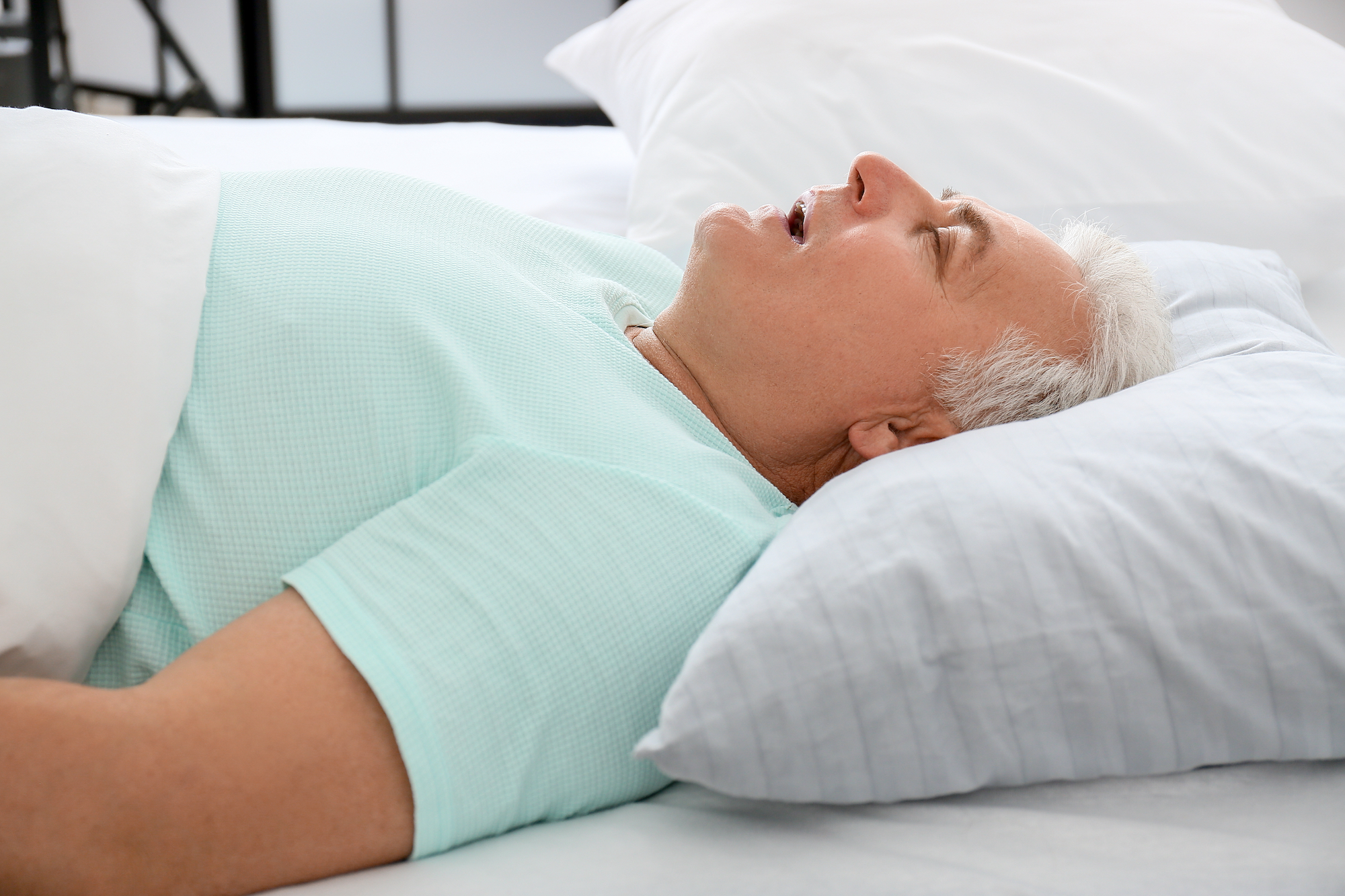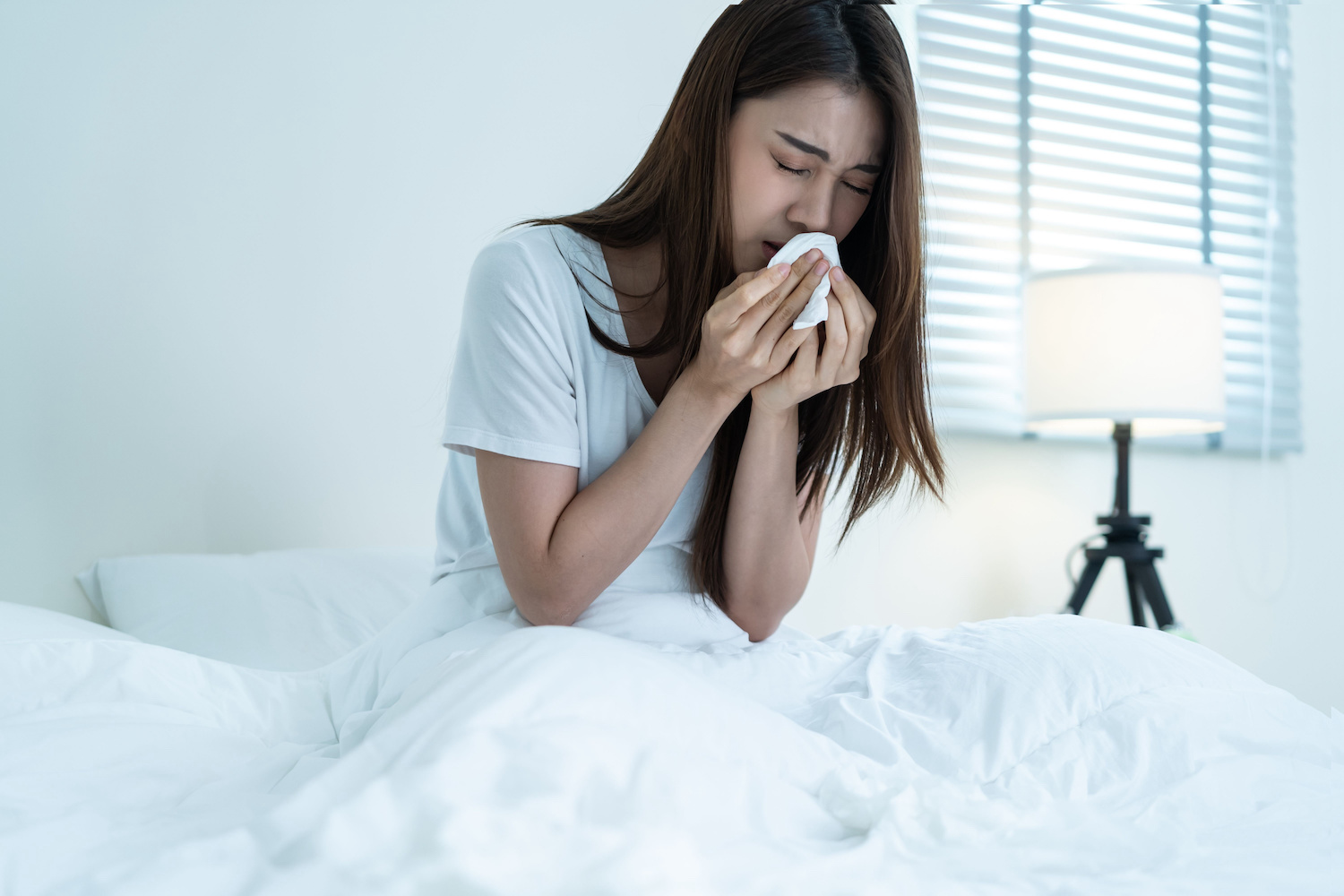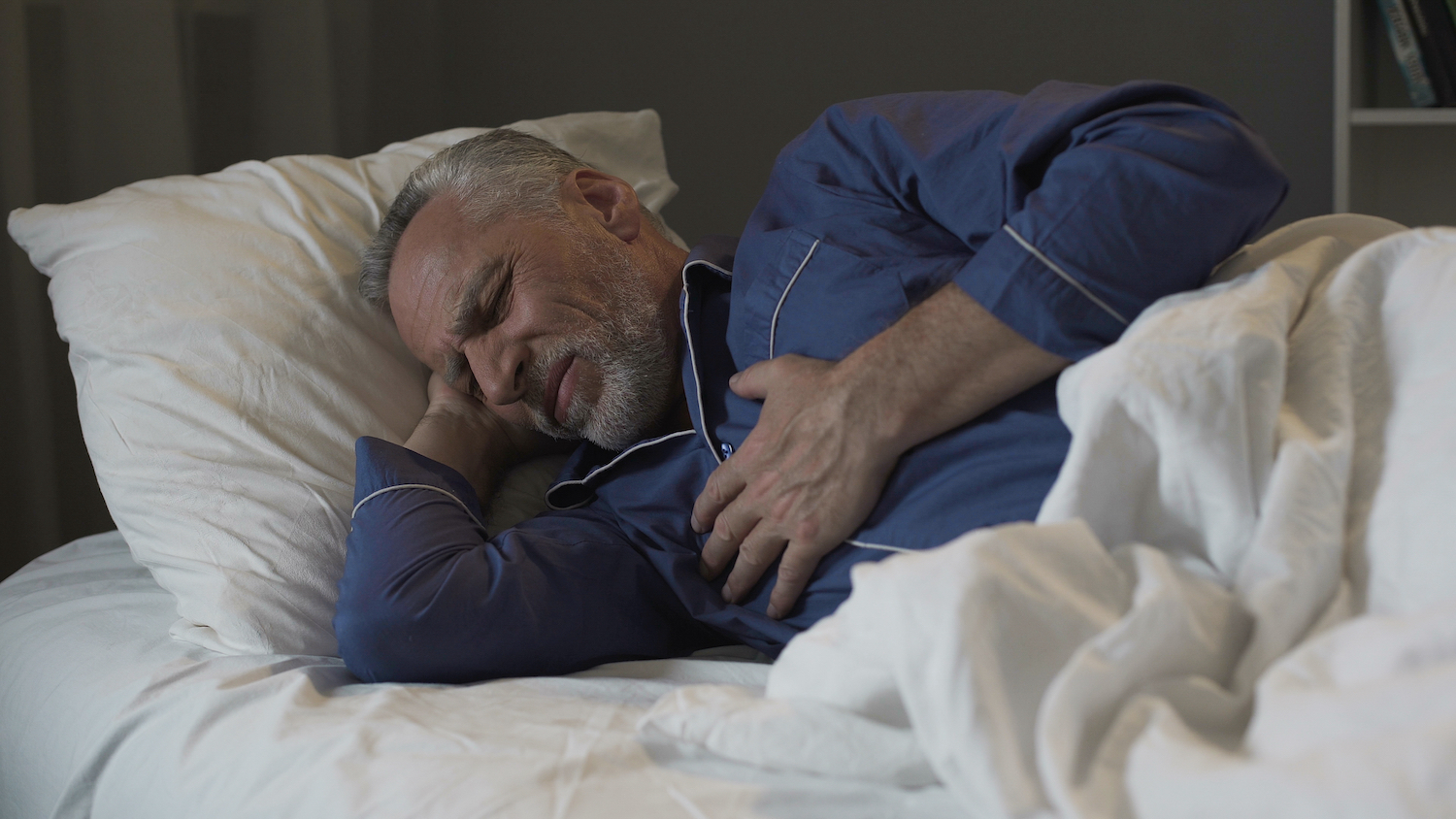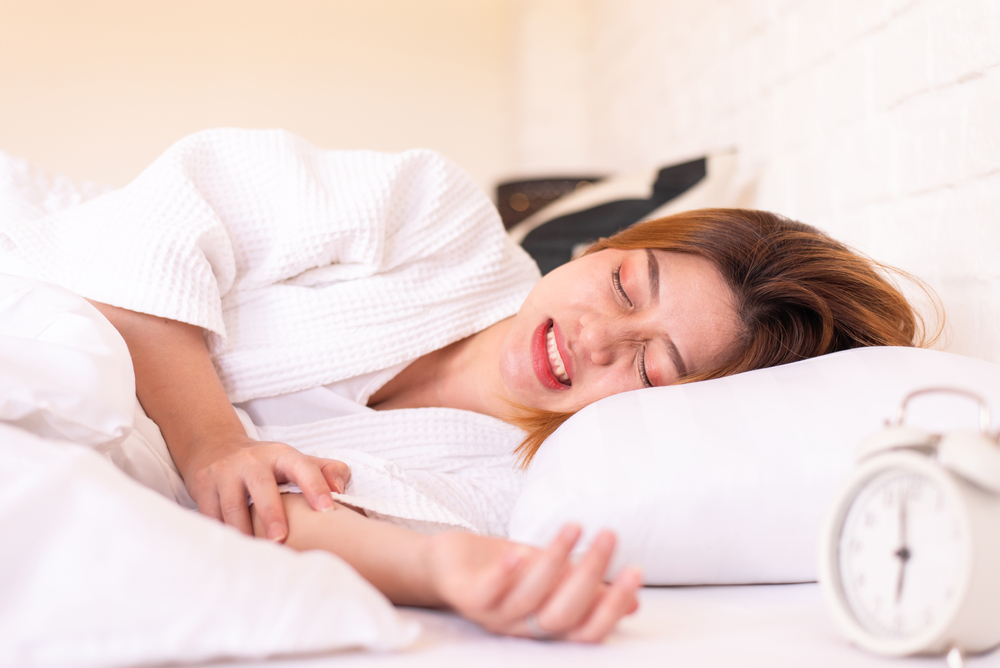AHI: AHI (Apnea-Hypopnea Index) is a scale that tells whether you have a sleep disorder called apnea and, if so, how serious it is. AHI represents the number of apnea and hypopnea events per hour of sleep. The apneas must last for at least 10 seconds and be associated with a decrease in blood oxygen levels.
Apnea/s: Repetitive episodes of complete or partial upper airway blockage during sleep. During an apneic episode, the diaphragm and chest muscles work harder as the pressure increases to open the airway. A person can stop breathing for as long as 20 seconds or more. Breathing usually resumes with a loud gasp or body jerk.
APAP (Auto-titrating Positive Airway Pressure): A device that adjusts automatically in response to changes in a user’s breathing patterns. Positive airway pressure (PAP) devices are used in the treatment of sleep apnea.
BPAP or BiPAP (Bi-Level Positive Airway Pressure): A device that is an effective treatment for sleep apnea patients; delivers air into airways through a specially designed face or nasal mask or pillows. These machines are called “bilevel” because they have two air pressure settings:· When you breathe in, BPAP machines deliver more air pressure. This is called inspiratory positive airway pressure (IPAP).· When you breathe out, the machine reduces the air pressure. This is called expiratory positive airway pressure (EPAP)
Cataplexy: Symptom of narcolepsy; consists of a sudden loss of muscle tone that leads to feelings of weakness and a loss of voluntary muscle control.
CBT-I: Cognitive Behavioral Therapy treatment specific to insomnia.
Central Sleep Apnea: Sleep disorder in which the airway is not blocked, but the brain fails to signal the muscles to breathe.
Chronotherapy: A behavioral technique in which bedtime is gradually adjusted; used in cases when the patient’s sleep-wake pattern is out of synch with the external environment.
Circadian rhythms: Biological rhythms that include the internal clock which influences when, how much, and how well people sleep.
Cognitive therapy: In some cases of insomnia, this therapy includes interventions that are meant to help people identify and correct inappropriate thoughts and beliefs that may contribute to their sleep problems.
Comorbidities: The presence of one or more additional medical conditions often co-occurring with a primary condition. Often seen in sleep apnea patients.
CPAP (Continuous Positive Airway Pressure): A device that is an effective treatment for sleep apnea patients; delivers air into airways through a specially designed face mask, nasal mask, or nasal pillows.
Dental Appliance: An oral appliance designed to treat obstructive sleep apnea (OSA), primary snoring, and associated symptoms.
Diabetes, Type 2: A disease in which the body’s ability to produce or respond to the hormone insulin is impaired, resulting in abnormal metabolism of carbohydrates and elevated levels of glucose in the blood and urine. Controlling blood sugar through diet, oral medications, or insulin is the main treatment. Regular screening for complications is also required. Often seen in Sleep Apnea Patients.
Difference Between CPAP Mask Types: A nasal pillows mask rests at the entrance of a person’s nostrils, a nasal mask covers the nose and a full-face mask covers the nose and mouth.
Durable Medical Equipment Provider (DME): Is a business that sells health care related items intended for use in the home for an extended period. With a doctor’s prescription, DMEs provide and service Sleep Apnea equipment such as CPAP machines, hoses, filters, and masks. Reputable DME providers have trained and certified staff who can assist choosing the right mask.
EASE (endoscopically-assisted surgical expansion): EASE (endoscopically-assisted surgical expansion) is an operation which improves obstructive sleep apnea (OSA). The rationale of the surgery is based on the findings that patients with OSA often have narrow jaws, which result in constricted nasal airways and back of the tongue shift resulting in airway obstruction. By widening the upper and lower jaws, the surgery expands the nasal area and the palate. It stiffens the soft palate, and thus creates more space.
ENT: See Otolaryngologist.
Full-Face Mask: A CPAP mask that provides a secure seal around the patient’s mouth and nose, giving users flexibility to breathe through either their nose or mouth. Considered an ideal choice for mouth breathers, or people who experience frequent allergies or nasal congestion.
General Practitioner: A doctor who treats acute and chronic illnesses and provides preventive care and health education to patients. Often a PHP.
GERD: A.K.A. Gastroesophageal reflux disease (GERD.) Sometimes called ‘reflux.’ A chronic disease that occurs when stomach acid or bile flows into the food pipe and irritates the lining. Often seen in sleep apnea patients.
GP: See General Practitioner.
Heart Disease: Any disorder that affects the heart. Often seen in Sleep Apnea Patients. Types of heart disease include:· Arrhythmia. An arrhythmia is a heart rhythm abnormality.· Atherosclerosis. Atherosclerosis is a hardening of the arteries.· Cardiomyopathy. This condition causes the heart’s muscles to harden or grow weak.· Congenital heart defects.· Coronary artery disease· Heart infections.
Home Sleep Test (HST): Patients having an HST are sent home to sleep with specialized equipment and instructions. The person puts on the equipment and self-administers the test. The equipment is a very simplified breathing monitor that tracks breathing, oxygen levels, and breathing effort while worn. Soon after the HST, equipment is returned, and data read from the monitors. Some HSTs currently do not fully capture what is monitored with a polysomnography test in an overnight lab, but technology in this area improves regularly.
Hose: A CPAP hose is a cylindrical hollow plastic tube that connects the CPAP machine to the CPAP mask. Air is compressed in the CPAP machine and then delivered through the hose to the mask. There are two main types of hoses: standard and heated hoses.
Hypopnea: Hypopnea is very shallow breathing, unlike the complete pause in breathing of sleep apnea. Hypopneas as well as apneas cause sleep interruption, a decrease in oxygen levels, and in general cause an individual to feel excessive daytime sleepiness the following day.
Insomnia: Difficulty initiating and /or staying asleep. Often seen in Sleep Apnea Patients.
Interdisciplinary Health Care: This approach involves team members from different health care and medical disciplines working together, with a common purpose, to set goals, make decisions and share resources and responsibilities for patients. In the case of Sleep Apnea, a patient might have been diagnosed by a Family doctor, then sent to a Pulmonologist, Neurologist or Sleep Specialist for treatment. Interdisciplinary care is beneficial when a patient has comorbidities and the doctors keep each other informed about their treatment plans.
Internist: A doctor who treats adults with diseases and conditions that affect the internal organs. Is often a PHP.
Mixed sleep apnea: A combination of central sleep apnea and obstructive sleep apnea.
Multiple sleep latency test (MSLT): Test that assesses the severity of sleepiness by measuring the speed of falling asleep performed in a series of naps that follows a full night of polysomnography in a sleep laboratory. MSLT is an essential tool used to diagnose narcolepsy.
Narcolepsy: Narcolepsy is a neurological condition in which a person has a hard time staying awake during the day. A person with narcolepsy may suddenly fall asleep during an activity. It is a neurological condition in which people experience excessive daytime sleepiness, cataplexy, sleep paralysis, hallucinations, and intermittent, uncontrollable sleep attacks during the day. Treatment involves taking medicine to help a narcoleptic stay awake during the daytime.A neurological condition in which people experience excessive daytime sleepiness, cataplexy, sleep paralysis, hallucinations, and intermittent, uncontrollable sleep attacks during the day.
Nasal Mask: A CPAP mask that covers a person’s nose from the bridge to their upper lip area. It delivers an indirect airflow to the airway. Considered to work well for patients who need higher pressure settings.
Nasal Pillow Mask: A CPAP masks that uses two soft and pliable silicone “pillows” that are inserted into the nostrils. They are anatomically shaped for optimum comfort.
Neurologist: A doctor with in-depth training in nervous systems and brain disorders. An imbalance in brain chemistry can cause symptoms including insomnia. Neurologists also treat restless leg syndrome, a common cause of insomnia.
Nocturnia: Frequent nighttime urination. Often seen in sleep apnea Patients
Non 24-hour sleep wake disorder: A circadian rhythm disorder in which the sleep-wake pattern does not conform to the usual 24-hour cycle.
Non-Rapid Eye Movement (NREM) sleep: One of the two basic states of sleep; consists of stages 1, 2 (light sleep) and 3 (deep sleep). No rapid eye movement exists in these stages.
Obstructive sleep apnea (OSA): The most common kind of sleep apnea. It is caused by a blockage of the upper airway that causes the body to struggle to get air.
Otolaryngologist: Ear, nose, and throat doctor.
Parasomnias: Abnormal behaviors during sleep that interrupt sleep and can result in injury, insomnia, and/or excessive daytime sleepiness
Periodic Limb Movement Disorder (PLMD): A disorder in which rhythmic jerking of the legs interrupts sleep, causing insomnia and/or excessive daytime sleepiness.
PHP: Primary Healthcare Provider
Polysomnography: A test that records aspects of sleep (for example, the amount of NREM and REM sleep, number of arousals) and a variety of body functions during sleep, including brain activity, eye, chin, and other body muscle activity, breathing patterns, heart rhythms, and limb movements. of body functions during sleep, including breathing patterns, heart rhythms, and limb movements.
Pulmonologist: A doctor who specializes in the respiratory system from the windpipe to the lungs.
Sleep apnea: Sleep disorder that occurs when a person’s breathing temporarily stops during sleep.
Sleep hygiene: Practices, habits, and environmental factors that are important for getting sound sleep.
Sleep Lab: An office or clinic that is set up for overnight stays—usually in a hospital or sleep center. Labs are staffed by Sleep Technologists who administer sleep tests. While a person sleeps, an EEG monitors their sleep stages and their cycles of REM and nonREM or NREM sleep. These tests watch what a person goes through during the night to identify possible disruptions in patterns of sleep.
Sleep paralysis: Symptom of narcolepsy; involves the temporary inability to move or speak while falling asleep or waking up. May also be caused by sleep deprivation, irregular sleep patterns, family history, and other causes.
Sleep Study: (See Polysomnography)
Sleep Technologist: A trained and certified health care professional who assists in the clinical assessment, monitoring and testing, diagnosis, management, and prevention of sleep-related disorders.
Surgery: Several types of operations exist to change the head, mouth, nose, face, jaw, chin, nose, and throat to treat sleep apnea. These operations include, but are not limited to, UPPP, EASE,
UPPP: UPPP (uvulopalatopharyngoplasty) is the surgical removal of soft tissue at the back of the throat. Removal can include all or part of the uvula (soft tissue flap that hangs down at the back of the mouth); parts of the soft palate and tissue at the sides of the throat; tonsils and adenoids.



